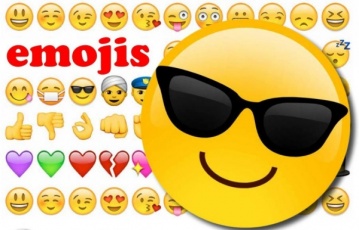
I was recently explaining to a nonsmartphone user that they could carry the entire Encyclopedia Britannica in their pocket. Of course, if you have a smart phone, you know, we carry the ability to access information about almost anything happening real time or from history in an instant. For years, I’ve been advocating to my senior friends, who have been resistant to jump online, to get with the program because the world is moving digitally, at lightning speed. I usually use the“It’s a great way to stay connected with the grandkids” pitch. I explain that they often respond to text messages within minutes, sometimes seconds, and the sense of connectivity is newfound! Just get one and try it and voil, you are linked up in a way that can be very fulfilling and smart!
All this preamble is to bring us to another topic that has emerged because of the digital world. You see, the Internet has changed the way we communicate because body language and verbal tone do not translate in our text messages or emails.
As a result, we’ve developed alternate ways to convey our feelings. The most interesting change to our online style has been the addition of two contemporary hieroglyphic languages: emoticons and emoji.
Emoticons and emoji are changing the way we communicate faster than linguists can keep up with or lexicographers can regulate. “It´s the wild west of the emoji era,” said linguist Ben Zimmer. “People are making up the rules as they go. It’s completely organic.”
Michelle Hershberger, Arts and Entertainment editor for the Megaphone Newspaper, says, “Emojis have given a face to emotional expression over digital communication and are undoubtedly on the rise with increasing popularity, solidified by Oxford’s Dictionaries naming of the ‘tears of joy’emoji word of the year in 2015.”
Originally meaning pictograph, the word emoji comes from Japanese e ( , "picture") moji ( , "character"). The resemblance to the English words emotion and emoticon is purely coincidental. This I discovered from, New Words for Old: Recycling Our Language for the Modern World. - Michael O´Mara Books – via Google Books.
Emoticons have been around for quite some time. The term itself is a shortened combination of "Emotion Icons". They are used to portray your emotions or moods while you are sending a message, email, in social media posts, or in any text message. Emoticons are punctuation marks, letters, and numbers used to create pictorial icons that generally display an emotion or sentiment, and most emoticons need to be read sideways. :)
Cydney Grannan’s posting to the Online Encyclopedia Britannica on 6/28/16 tells us that, “The emoticon came into being after a joke went wrong at Carnegie Mellon University in 1982. A gag about a fake mercury spill posted to an online message board sent the university into a tizzy, and because of this confusion, Dr. Scott E. Fahlman suggested that jokes and nonjokes be marked by two sets of characters we now recognize as standard emoticons: the smiley face :-) and the frowning face :-( . After this, emoticons were a big hit among Internet users.
Emoji were invented in the 1990’s by Shigetaka Kurita and were intended for a Japanese user base. So, if you come across a smiley face that contains a character you can find on your computer keyboard, it’s an emoticon. If it’s a little cartoon figure that is free from the binds of punctuation, numbers, and letters, it’s an emoji.
Emojis are not replacing language but are supplementing written communication. The way emojis fit in with language across the globe is distinct across cultures but does share common themes. SwiftKey recently partnered with linguist Gretchen McCulloch to interpret and understand the patterns and trends across different regions of the world.“These are all about expressing emotion, they are physical, they are faces,” SwiftKey co-founder and CTO Ben Medlock said. “And, by and large, people are sharing positivity.”
An interesting global trend emerged from the data - 70% of emojis are used to express positive emotion, 15% neutral and only 15% negative. The famed “tears of joy” emoji accounts for 20% of all emojis used and is often commonly used in repetition in a string of two, three, or four. “Emojis are a supplemental language and part of a new style,” said McCulloch. “People are able to efficiently express emotions in real time.”
Now, back to advocating for keeping up with this changing world in the digital age: because adding emoticons to your vocabulary might just make you happy! According to Courtney Seiter,in an article on BufferBlog, a 2008 study found that emoticon users experience a “positive effect on enjoyment, personal interaction, perceived information richness, and perceived usefulness”. The study added that emoticons are “not just enjoyable to use, but also a valuable addition to communication methods”.
With so much of our lives now written, and open to misinterpretation, using images is a great way to convey what you are feeling.
It’s January, a new year, a time for a new beginning and a great way to say, I’m happy . Here at the Happy Herald we wish you all peace, heath and prosperity in 2017.
